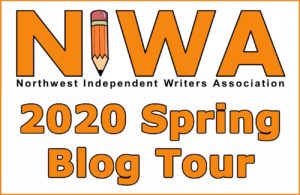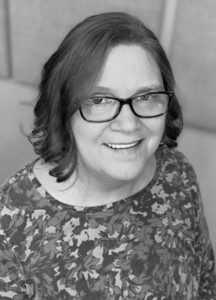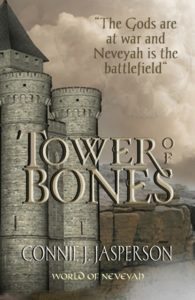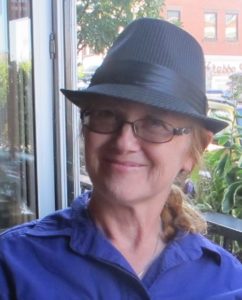The Author Community
This is the fourth in a six-week blog tour series for the Northwest Independent Writers Association. You can catch up with them at https://www.niwawriters.com/
We are a strange group, we writers who consider ourselves “the author community.” For the partners and spouses of writers, I’m sure that sounds like an understatement. After all, they’ve lived through the sudden 3:00 AM awakening of their writer, who exclaims, “I just figured out the ending to my story, but I have to write it down now before I go back to sleep and forget it!” They’ve endured the heartbreak of watching their author mope around the house for days after a tepid two-star review on Amazon. They can’t forget the jubilation when their partner shouts, “I just sold my first book to someone who isn’t a family member!”
How did we become members of this independent author community? Some, with an abundance of self-confidence, identified themselves as authors when they first put pen to paper or fingers to keyboard. Others felt inducted into the group when they typed “The End” upon the completion of the first draft of a short story or a novel. For poets, it was writing that final line of the last stanza. Still others didn’t identify themselves as authors until their short story got published in a magazine or anthology, or their book appeared on Amazon or Barnes and Noble. And then the fun really begins!
I had no inkling of an author community as I was writing my first novel. All I knew was that I had a story inside me that would make me burst if I didn’t get it out. But once it was out, then what? I have a friend who spent a year unsuccessfully trying to woo a literary agent into taking on his project. Another friend told me, “Just publish it yourself.” Ultimately, that’s what I did—full speed ahead, damn the torpedoes.
Once I decided to publish independently, doors began to open. The author community seemed to come out of the woodwork and welcome me into its ranks. Who knew there were groups of independent authors all around me, eager to greet me, to support me in my efforts, to help me improve my craft?
So as strange or as downright weird as we may each be individually, our group is united in its passion for all forms and styles and genres of writing. We share what we’ve learned on our personal journey, cue others to upcoming workshops and conferences, offer critiques and beta readings to hone the skills of our colleagues, act as cheerleaders when we read other indie authors and post reviews on Amazon and Goodreads. We share an identity that is as exciting as it is sobering. We know we must promote the highest standards of professionalism so independent authors are not regarded as somehow inferior to those published by the big houses.
In fact, I’ve decided that what I like best about being an independent writer is this connection with others like myself. Interestingly, the author community is both real and virtual, with physical meetings as well as online Facebook meetings. I am certain I would have made very little growth as a writer without these groups having my back.
I cannot remember exactly how I stumbled upon Willamette Writers, a statewide group of authors with local branches all around Oregon. In thinking about it, it may have been my daughter-in-law, a passionate community organizer, who pointed it out to me. The Salem branch of Willamette Writers meets monthly. In addition to giving a forum to members for promoting their books, the group hosts a guest, who gives a presentation about various aspects of the craft. During one session, a professional editor instructed us in the fundamentals of self-editing. There have been conferences on building story arc, writing realistic dialogue, character development, point of view—in short, topics designed to improve our skills. There was even a session that featured a local literary agent, who highlighted the nuts-and-bolts of seeking an agent for those inclined to do so.
Willamette Writers is probably best known for sponsoring its summer writing conference in Portland. This is a national event that hosts a large program of workshops, as well as a bevy of literary agents who make themselves available to hear pitches and proposals from attendees.
Closer to home, my wife spotted a small ad in the Statesman Journal, Salem’s local newspaper, several years ago about a weekly group that calls itself WYTT—Writers Yesterday, Today, and Tomorrow. This is a group of independent authors at every level of skill, from those who have already published one or more books, to those who are just turning their talents to writing and are eager for feedback. What is special about it is that everyone must read from their works aloud, after which the other members give feedback. I have found it to be extraordinarily helpful.
Given the number of members who often attend WYTT and the time limitations that imposes, it soon became clear to me that a smaller critique group would also be essential. Branching off from WYTT, we now have a group of five who meet monthly. We provide hard copies of our material to each other, and then read that material aloud. In this extended format, more in-depth criticism is possible, including developmental editing as well as some copy editing.
On the virtual front, I am a member of the Northwest Independent Writers Association. Although it was started by a small group of like-minded folks years ago at OryCon, Oregon’s annual science fiction and fantasy convention, it is open to all genres. It is a Facebook group dedicated to improving the skills of its members as well as improving the professionalism of independent writing overall. Need a cover designer? A good beta reader? A venue to promote paperback copies of your books? Help with self-editing? Ideas about marketing? Someone in NIWA knows, and is eager to share that knowledge with you. NIWA also publishes quarterly catalogues of members’ books, a great way to advertise our newest ventures, as well as to provide our portfolio to prospective fans. I am especially pleased with the annual NIWA anthology, a collection of members’ short stories around a particular topic. Last year the topic was “Doorways.” This year it will be “Escape,” to be published in November.
These are only the tip of the iceberg. There are writers’ groups out there which meet in almost every town. Some are specific to genre—groups for authors of romance or mystery or science fiction or horror. There are groups for promoting literary fiction, poetry, and nonfiction. There truly is a flavor for everyone. If you’re a new writer or a seasoned veteran, have a taste!
Other posts in this series by this author:
https://authorwilliamcook.com/blog/ “Reading to Impact Your Writing (And Can Watching Movies be a Business Expense?)” March 29-April 4.
www.conniejjasperson.com “Advice for New Writers” April 5-11.
https://lecatts.wordpress.com “My Approach to the Writing Process” April 12-18.
Watch for the next post in the series by this author:
www.tanstaaflpress.com/news/ “Self-Editing, Grammar, and Beta Readers” April 26-May 2.
William Cook moved to the Pacific Northwest from the East Coast in 1989, and worked for a total of 37 years as a mental health therapist until his retirement in 2011. He splits his time between writing, babysitting for his 15 grandchildren, and sneaking off to mid-week matinees (when theaters are open!). The Kindle edition of his latest book, Dungeness and Dragons: A Driftwood Mystery, is available now for pre-order and will be published on April 24. Find all his books at:
https://authorwilliamcook.com/







